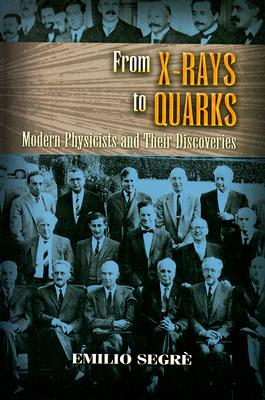Description
A leading figure in twentieth-century physics offers impressions and recollections of the field's development. Nobel Laureate Emilio Segr (1905-89) knew and worked with many of modern physics' preeminent scientists. In this simple but elegant history, he offers compelling views not only of the milestones of scientific discovery but also the personalities involved--their attitudes and politics as well as their trials and triumphs. Highlights include a profile of Albert Einstein, from his unconventional youth to his role as science's elder statesman; the wonder year of 1932, which witnessed the discoveries of the neutron, positron, and deuterium; and the first steps in building particle accelerators.
A student and colleague of Enrico Fermi, Segr made numerous important contributions to nuclear physics, including participation in the Manhattan Project. Segr is further renowned for his narrative skills as a historian. This book is a companion to the author's From Falling Bodies to Radio Waves: Classical Physicists and Their Discoveries, also available from Dover Publications.
About the Author
Emilio G. Segrè The History of Physics Emilio Segrè (1905-1989) became, in 1928, the first student to earn a doctorate in physics at The University of Rome under Enrico Fermi. A decade later, restrictive fascist laws against Jews in academic positions in Italy turned Segrè into an academic refugee -- he settled in Berkeley where, in 1955, with colleague Owen Chamberlain, he proved the existence of the antiproton, a negatively charged proton that destroys itself as well as the matter it strikes. In 1959, Segrè and Chamberlain shared the Nobel Prize for Physics for their work on antiproton. From 1943 to 1946, Segrè worked as a group leader on the Manhattan Project at Los Alamos. In his 1970 book about Fermi, Segrè recalled a crucial atomic test in the New Mexico desert: In a fraction of a second, at our distance, one received enough light to produce a sunburn. I was near Fermi at the time of the explosion, but I do not remember what we said, if anything. I believed that for a moment I thought the explosion might set fire to the atmosphere and thus finish the earth, even though I knew that this was not possible. It always seems an opportunity that should not be missed when a major participant in the world of science takes the time and makes the effort to write about his field for a general audience. At Dover we were very pleased to acquire from Emilio Segrè's heirs the rights to publish his outstanding two-volume history of physics written for the general reader and historian of science: From Falling Bodies to Radio Waves: Classical Physicists and Their Discoveries and From X-Rays to Quarks: Modern Physicists and Their Discoveries, both reprinted by Dover in 2007.




